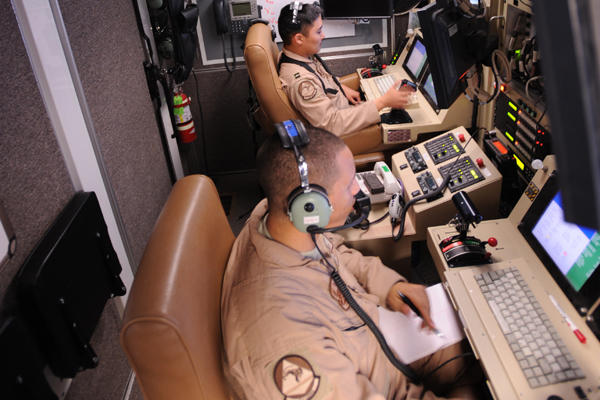Enlisted drone pilots will be eligible for the same bonuses the Air Force plans to offer its officers, the service's top enlisted leaders said Wednesday.
"When you think about officers and enlisted in the Air Force, you pay officers more because of where they fall in the organization structure, not because [of] the nature of the technical job they do," Air Force Chief Master Sgt. James Cody said at the annual Air Force Association's Air, Space & Cyber conference near Washington, D.C.
"We absolutely have airmen -- officer and enlisted -- who do the same types of things every day, all day and always have. But if they're doing the same type of technical thing, and we're paying them for doing that technical thing, then yes, they'll get the same money. And that is exactly what will happen with [remotely piloted aircraft] pilots," Cody told reporters during a media briefing.
"They will get the same exact incentive pay; they would just get different base pay because of their rank," he said.
Check out Military.com's coverage of the AFA's Air, Space & Cyber conference.
The Air Force announced last month that it will increase Aviator Retention Pay bonuses by $10,000 this year, up to $35,000 per year, for airmen who sign up for five more years. The bonus is expected to take effect no later than Oct. 1, as part of the fiscal 2016 National Defense Authorization Act.
Cody did not say when enlisted airmen would actually start receiving the bonus pay. But the first class of enlisted drone pilots begins training next month, and it will take roughly a year before they're ready for their new duties, the head of Air Education Training Command said earlier this week at the conference.
The training given to enlisted pilots flying the RQ-4 Global Hawk, a move approved in 2015, will be exactly the same as officers receive, said Lt. Gen. Darryl Roberson.
Roberson said the four enlisted pilots beginning class Oct. 1 are "very experienced and familiar with RPA operations … these are tech[nical] sergeants, master sergeants, who are either already sensor operators or other RPAs or are very familiar with the operations that occur."
In the last two years he's been on the job, the staple was to graduate 192 pilots per year -- a number that has since doubled to 384 pilots, Roberson said.
"This is helping establish the RPA community in the United States Air Force," he said. "We had to increase the number of [instructor pilots], simulators and facilities to do that. It's been a monumental effort from the airmen."
Faced with high operational demand and a pilot shortage, the Air Force also recently announced plans to open to all career fields to the job of steering the high-altitude RQ-4, made by Northrop Grumman Corp.
Enlisted personnel will take over most of the slots to pilot the Global Hawk over the next several years, according to Maj. Bryan Lewis, an Air Force spokesman at the Pentagon.
"By 2020, the Air Force hopes to have a little more than half of its 198 RQ-4 pilots be enlisted airmen," he said in an email to Military.com on Sept. 2. "And by that point, roughly 70 percent of the 121 airmen flying Global Hawk missions on a day-to-day basis -- not performing other duties such as staff positions at the wing -- will be enlisted airmen."
As of fiscal 2015, the service had 33 RQ-4s in inventory, according to Air Force documents.
-- Brendan McGarry contributed to this report.
-- Oriana Pawlyk can be reached at oriana.pawlyk@military.com. Follow her on Twitter at @Oriana0214.
Related Video:





























